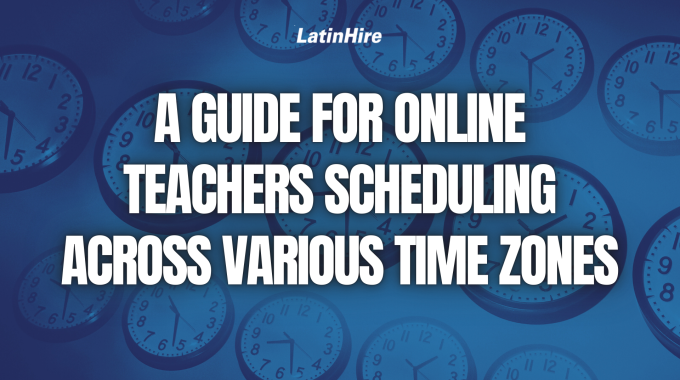Yesterday (March 9, 2025) marked the start of daylight saving time (DST)—a potential headache for…

How to Promote Student Engagement in an Online Class
There are few experiences more awkward than asking a question in your online class and hearing crickets. Engaging students in online classrooms can be challenging due to the lack of physical presence, non-verbal cues, and direct social interaction. However, with the right strategies, you can create a more dynamic and interactive learning environment that boosts participation.
No matter the level or subject you teach, here are some actionable tips to encourage active involvement among your students in your virtual classes.
1) Set Clear Expectations Early On

From the very first class, communicate how important being engaged is to the learning experience. Talk about how students who participate tend to get a lot more out of the lessons, and you can even assign a participation grade to your students depending on the structure of your class. Set early expectations by explaining how discussions, group work, or chat boxes will be used. Make it clear that every student’s voice is valuable and by being engaged in the lesson together, they not only enrich their individual learning experience, but also the experiences of their classmates.
2) Use Interactive Tools
Students tend to disengage or get distracted easily if the entire lesson is just the teacher talking on and on. Many online learning platforms offer interactive features like polls, breakout rooms, and collaborative documents that you can take advantage of to get students working together and actively engaging with the lesson. These tools can make students feel more involved, especially if they are hesitant to speak up in a large group setting.
3) Split the Class into Smaller Groups
Breakout rooms allow students to have discussions in smaller groups, which can make them more comfortable sharing their ideas. You can provide discussion questions and practice problems for each group to work on together, while you pop into the groups to check on their progress. If you notice a student is very quiet in a breakout room, you can direct a question at them to give them a chance to speak up.
4) Encourage Video and Audio Participation

While some students feel uncomfortable turning on their webcams during class, you can encourage them to do so to make the class feel more personal and connected. At the start of the class, you can incorporate some icebreaker activities using video and audio to help students warm up. One example can be having your students turn on their webcams and then you share a statement. Those who agree with the statement will keep their webcams on and those who don’t can cover the camera with their hands. You can do a few rounds of this and once students see each others’ faces, they may feel better about keeping their webcams on.
5) Give Students Time to Think
Rather than cold calling students as soon as you ask a question, give them a minute to think and write down their thoughts. Let them know that you will be randomly selecting students to share their answers so each of them are aware that they may be called upon. This method encourages all students to think critically about the questions you’re asking without feeling too pressured. If you call on a student and they do not feel comfortable responding, don’t push them. You can ask them to choose another student to help answer the question on their behalf.
6) Create a Safe and Supportive Environment
Building a positive, encouraging atmosphere is key to getting students engaged. Make sure students feel their contributions are respected, even if they make mistakes. Encourage an open mindset where errors are seen as learning opportunities. Consider using the “yes, and…” approach to build on students’ ideas rather than simply critiquing them. You can ask your students to build on each others’ answers to make the experience more collaborative as well.
7) Use Engaging, Open-Ended Questions

The questions you ask matter. Open-ended questions encourage deeper thinking and discussion. Instead of “yes” or “no” questions (which have their merits), pose questions that require deeper thinking and explanation. For example, “What do you think would happen if…?” or “How does this concept apply to your daily life?” By asking questions that prompt thinking, students are more likely to engage with the questions and share their perspectives. You can even do a roundabout where each student has to share their ideas. With that expectation out in the open, students will have no choice but to think for themselves and share whatever they came up with.
8) Recognize and Celebrate Participation
Celebrating participation, even in small ways, can be a huge motivator. Give shout outs to students who engage in class, either during the lesson or at the end. Praise students who are usually quiet for speaking up and validate their responses. You can create an award system for student participation as well to promote further engagement.
Do you have any other strategies for promoting student engagement in your online classes? Share them in the comments below.



